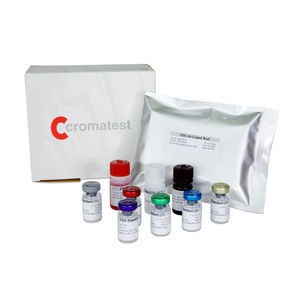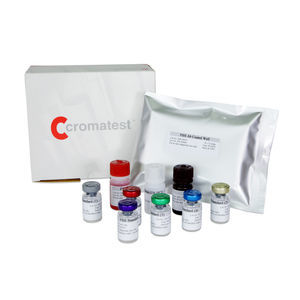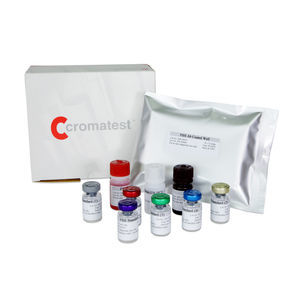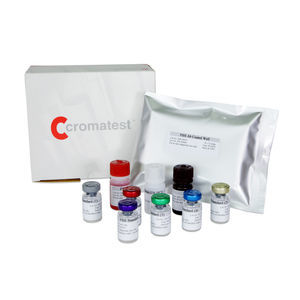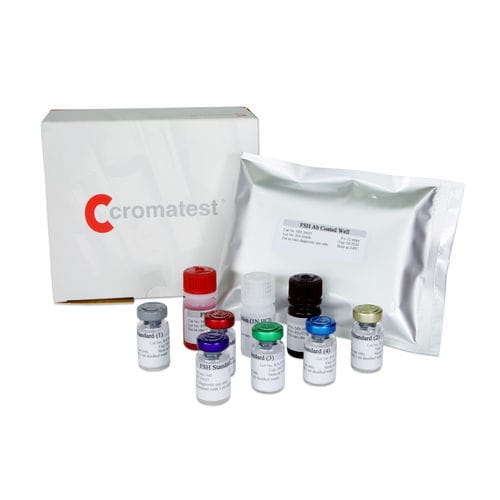
- Laboratory
- Laboratory medicine
- Solution reagent
- LINEAR CHEMICALS
Solution reagent kit 6107620diagnosticprogesterone
Add to favorites
Compare this product
Characteristics
- Type
- solution
- Applications
- diagnostic
- Tested parameter
- progesterone
- Storage temperature
Min.: 2 °C
(36 °F)Max.: 8 °C
(46 °F)
Description
Progesterone is a C21 steroid which is synthesized from both tissue and circulating cholesterol. Cholesterol is transformed to pregnenolone which is then converted via a combined dehydrogenase and isomerase to progesterone. The principle production sites are the adrenals and ovaries and the placenta during pregnancy. The majority of this steroid is metabolized in the liver to pregnanediol and conjugated as a glucuronide prior to excretion by the kidneys.
Progesterone exhibits a wide variety of end organ effects. The primary role of progesterone is exhibited by the reproductive organs. In males, progesterone is a necessary intermediate for the production of corticosteroids and androgens. In females, progesterone remains relatively constant throughout the follicular phase of the menstrual cycle. The concentration then increases rapidly following ovulation and remains elevated for 4-6 days and decreases to the initial level 24 hours before the onset of menstruation.
PRINCIPLE OF THE TEST
The progesterone EIA is based on the principle of competitive binding between progesterone in the test specimen and progesterone-HRP conjugate for a constant amount of rabbit anti- progesterone. In the incubation, goat anti-rabbit IgG-coated wells are incubated with 25 l progesterone standards, controls, patient samples, 100 l progesterone-HRP Conjugate Reagent and 50 l rabbit anti-progesterone reagent at room temperature (18-25C) for 90 minutes. During the incubation, a fixed amount of HRP-labeled progesterone competes with the endogenous progesterone in the standard, sample, or quality control serum for a fixed number of binding sites of the specific progesterone antibody.
Catalogs
No catalogs are available for this product.
See all of LINEAR CHEMICALS‘s catalogsRelated Searches
- Assay kit
- LiNEAR solution reagent
- Blood assay kit
- LiNEAR molecular biology reagent
- Immunoassay assay kit
- Plasma assay kit
- Infectious disease detection kit
- LiNEAR rapid blood test
- LiNEAR protein reagent
- LiNEAR diagnostic reagent
- LiNEAR laboratory reagent
- Rapid lateral flow test
- Immunoassay rapid diagnostic test
- LiNEAR cassette rapid test
- LiNEAR rapid virus test
- LiNEAR rapid serum test
- LiNEAR rapid plasma test
- Histology reagent kit
- LiNEAR medium reagent
- LiNEAR rapid infectious disease test
*Prices are pre-tax. They exclude delivery charges and customs duties and do not include additional charges for installation or activation options. Prices are indicative only and may vary by country, with changes to the cost of raw materials and exchange rates.







